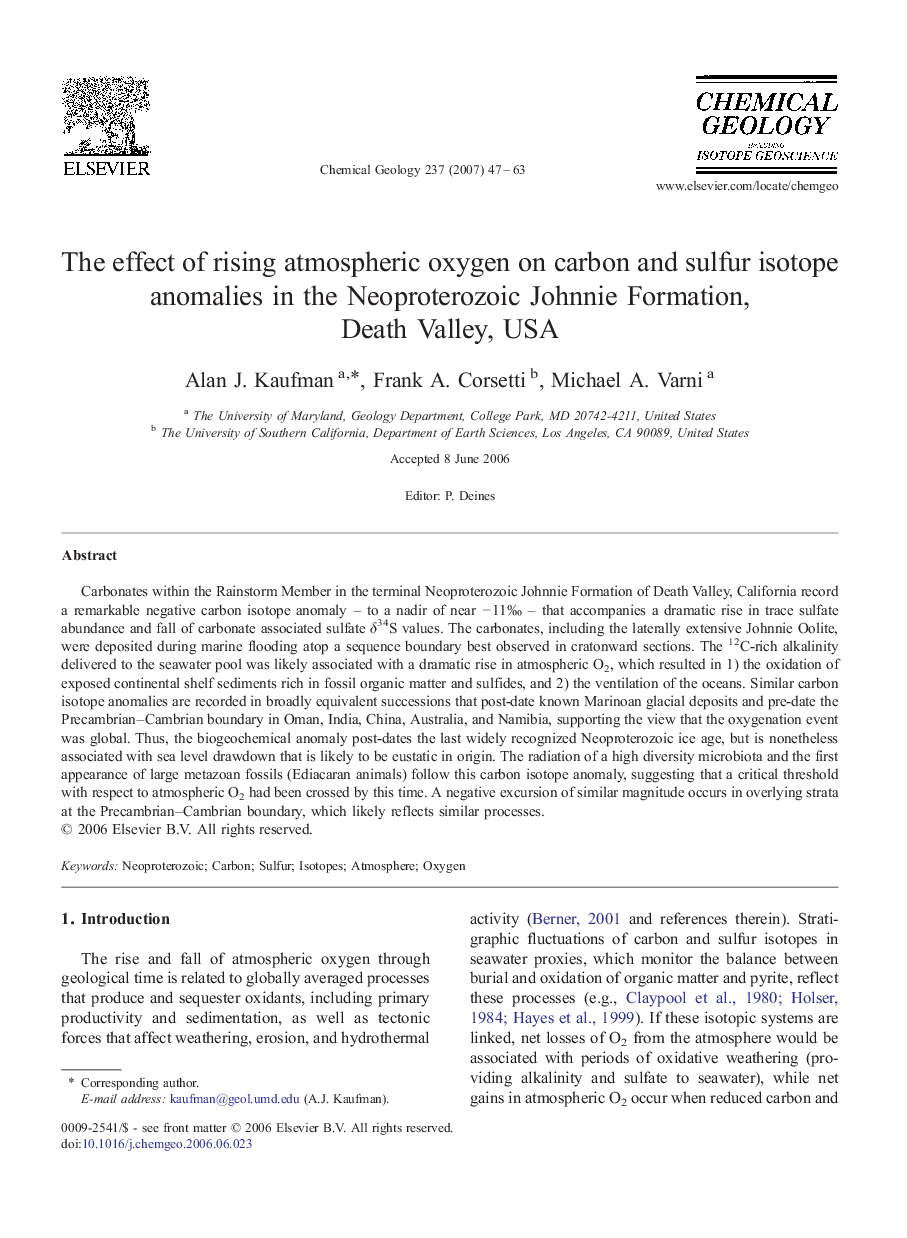| کد مقاله | کد نشریه | سال انتشار | مقاله انگلیسی | نسخه تمام متن |
|---|---|---|---|---|
| 4701103 | 1637756 | 2007 | 17 صفحه PDF | دانلود رایگان |

Carbonates within the Rainstorm Member in the terminal Neoproterozoic Johnnie Formation of Death Valley, California record a remarkable negative carbon isotope anomaly – to a nadir of near − 11‰ – that accompanies a dramatic rise in trace sulfate abundance and fall of carbonate associated sulfate δ34S values. The carbonates, including the laterally extensive Johnnie Oolite, were deposited during marine flooding atop a sequence boundary best observed in cratonward sections. The 12C-rich alkalinity delivered to the seawater pool was likely associated with a dramatic rise in atmospheric O2, which resulted in 1) the oxidation of exposed continental shelf sediments rich in fossil organic matter and sulfides, and 2) the ventilation of the oceans. Similar carbon isotope anomalies are recorded in broadly equivalent successions that post-date known Marinoan glacial deposits and pre-date the Precambrian–Cambrian boundary in Oman, India, China, Australia, and Namibia, supporting the view that the oxygenation event was global. Thus, the biogeochemical anomaly post-dates the last widely recognized Neoproterozoic ice age, but is nonetheless associated with sea level drawdown that is likely to be eustatic in origin. The radiation of a high diversity microbiota and the first appearance of large metazoan fossils (Ediacaran animals) follow this carbon isotope anomaly, suggesting that a critical threshold with respect to atmospheric O2 had been crossed by this time. A negative excursion of similar magnitude occurs in overlying strata at the Precambrian–Cambrian boundary, which likely reflects similar processes.
Journal: Chemical Geology - Volume 237, Issues 1–2, 15 February 2007, Pages 47–63